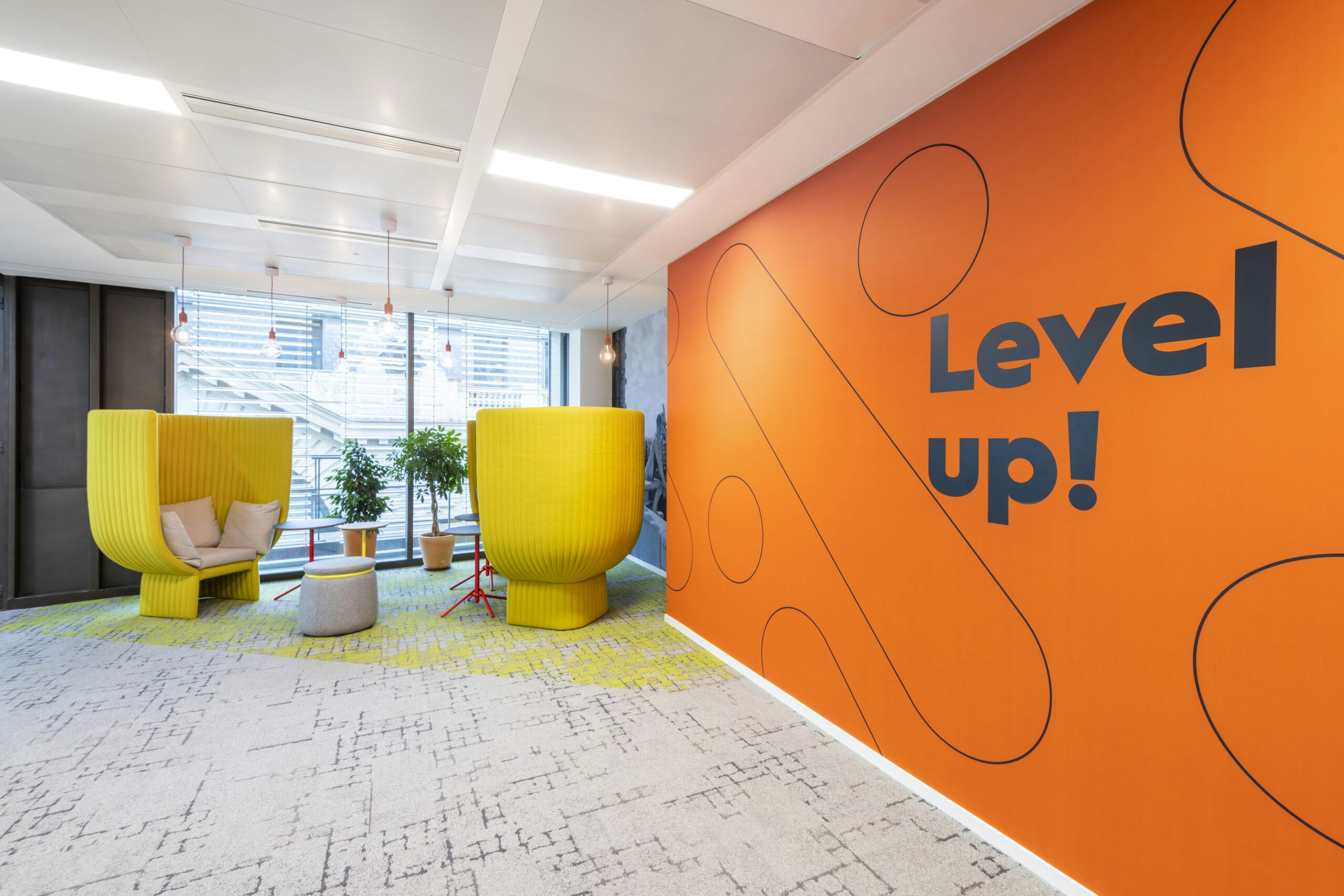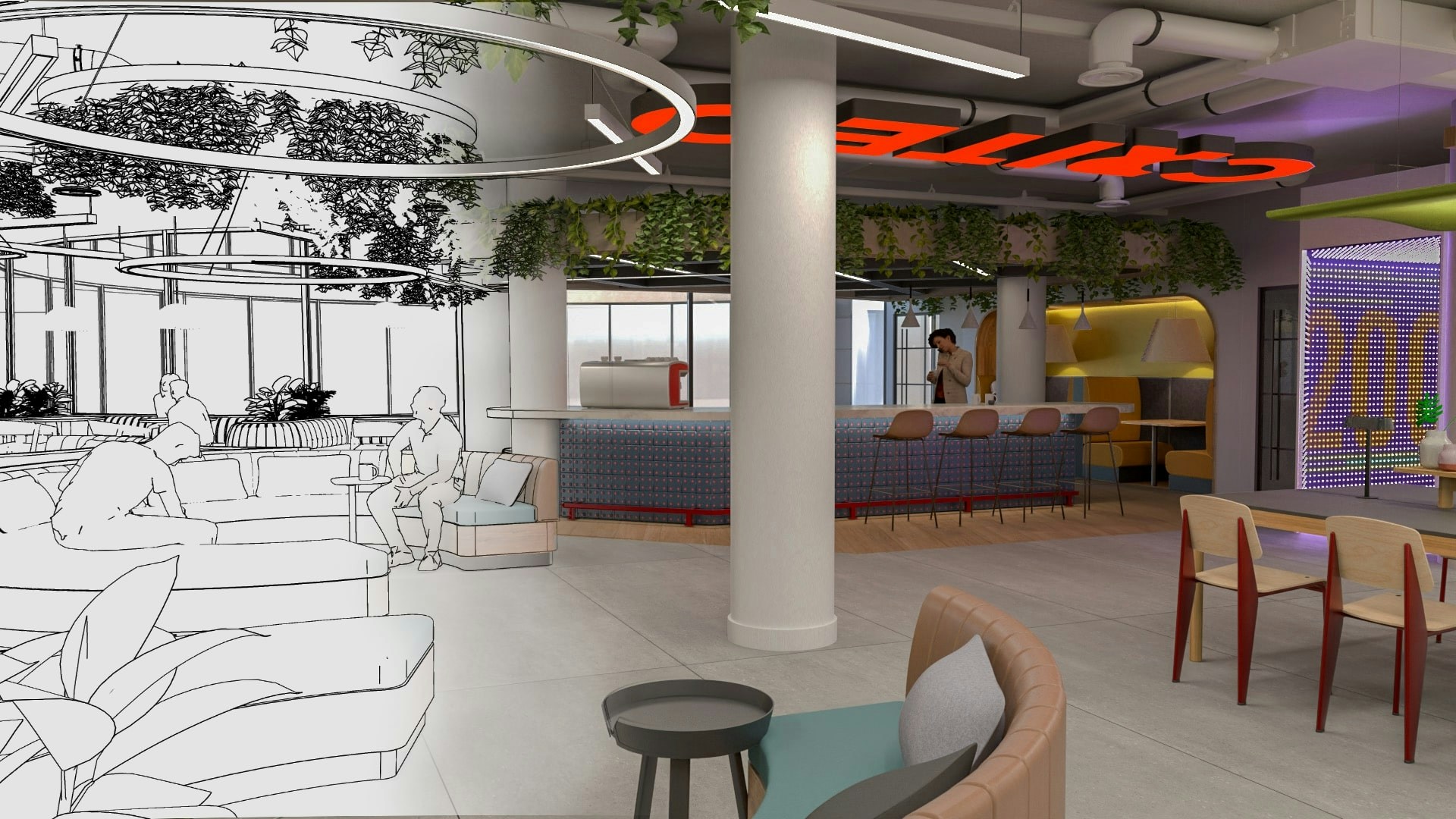Office Refurbishment in 2025
The interest in office refurbishments has grown significantly in the last few of years with structural changes required for hybrid working. This change has been felt acutely by the London office market where 4 in 10 staff are under hybrid working arrangements compared to the national average of 28% according to ONS data.
With hybrid working on the rise, companies are reconsidering the layout of their offices to create more collaborative spaces. This is a trend likely to continue throughout 2025-2026. A recent study by Microsoft showed that around 70% of staff want flexible working arrangements to continue. Additionally, 65% are looking for more team-based interaction. Companies are responding to this trend. Salesforce, for example, has decreased its desk space by 40% to create more collaborative team-focused areas. We’ve supported similar projects with clients significantly reducing overall floor plate size, saving costs, while at the same time accommodating hybrid working patterns.
Our prediction throughout 2025 is that rising costs of office space and the need to attract and retain staff will lead a large percentage of companies to look for more collaborative and interactive, hybrid office designs, reducing their overall office space. We’ve seen for instance a defining characteristic is the ‘flight to quality,’ where demand and rental growth are concentrated in prime, sustainable, and amenity-rich office spaces.
To help better understand the ongoing changes in the office market, our experts have created this office refurbishment guide containing a step-by-step list of items to ensure your office refurbishment is successful and aligns with modern working practices.





